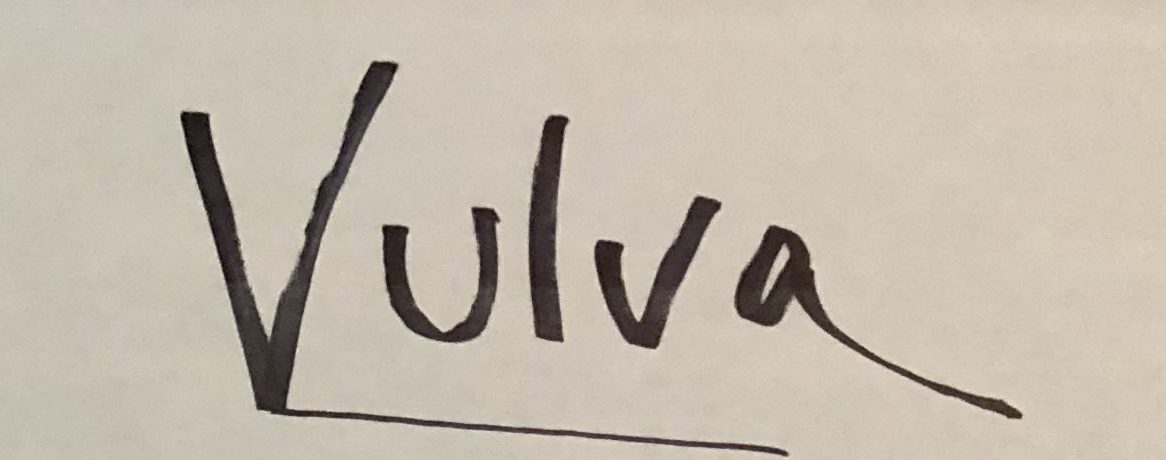There is a difference between a vulva and a vagina. Reading that sentence might make you feel uncomfortable, partially because we have all been conditioned not to say those words out loud, and partially because many of us don’t actually know the difference between the vulva and the vagina. We’re going to change that and I’ll explain why.
Let’s start with some definitions.
- The vulva is composed of the external female genitals, including the inner and outer labia, the clitoris, the opening to the vagina and the opening to the urethra.
- The vagina is part of the internal female reproductive organs which also include the ovaries, fallopian tubes, uterus and cervix.
At our first Dynamo Girl puberty workshops, in our quest to keep things from being confusing, we decided to focus on the internal female reproductive organs: the ovaries, fallopian tubes, uterus and vagina. We did not speak specifically about the different parts of the vulva because we thought it was too much to cover both the internal and external organs in a single session. (We were wrong and I’ll explain why in a minute.) We did make sure the girls knew that they have three holes “down there”: the opening to the urethra, the opening to the vagina and the anus. (If you think saying vulva out loud is hard, try saying anus to a group of 10 year olds.) We chose to focus on the internal female reproductive organs at our workshops because we spend a lot of time discussing menstruation and that’s where most of the action happens.
Internal female reproductive organs have a lot of important jobs over the course of a female’s life and we touch on them all at our workshops: born with all her eggs at birth (very cool fact), menstruation for 30-40 years (lots to cover there), pregnancy (could be a whole workshop on its own), menopause (we only scratch the surface.) We cover a lot in three hours, we never have enough time and the girls have a million brilliant questions. As educators and changemakers, Dynamo Girl faculty have the privilege of removing the social stigma from menstruation, deconstructing girls’ notions of what really comes out of their bodies when they menstruate (spoiler alert: very little actual blood) and helping them feel prepared and confident for when they do get their periods.
In contrast to all the action in the internal reproductive organs, the vulva does not have an exciting job in the name of physiology. However, that doesn’t mean it doesn’t feature in our daily lives. Just think about how many millions of women around the country shave, wax or laser the hair from their labias on a regular basis and yet, most don’t know the word or at least use the word out loud. Can you imagine going to get your eyebrows waxed and having to ask for what you want without actually saying the word eyebrow?!!! And while the clitoris does not have a specific reproductive use, which is one reason why so many puberty books and health educators don’t discuss it, the clitoris does have the honor of being a part of the body whose sole purpose is for pleasure. That’s pretty amazing, but it’s almost like an open secret because no one talks about it. The stigma of female sexual pleasure is a topic for a different time, but I believe it is important to acknowledge that many educators and parents don’t teach girls about their clitorises because they are uncomfortable with the idea of female pleasure.
In failing to discuss the vulva in our early workshops, we made a mistake. While it’s hard to admit that, it has given us an opportunity to consciously articulate why it is so important to talk openly about ALL of the female sex organs. As we reflected on the curriculum of earlier workshops, we were concerned that by not discussing the vulva, we had unintentionally conferred shame on a part of the female body that is already a source of embarrassment for so many girls and women. Girls and women should know the name and purpose of EVERY part of their bodies, particularly the parts they can see and touch, like the vulva. Let me give you a couple of examples: what if you want to talk about your arm but don’t know what to call your elbow? Or, what would it be like to talk about your mouth, but not have the words to describe your tongue and the purpose of your taste buds? To build stronger and more confident girls, we all need to understand our anatomy and physiology. To honor ourselves, we need to know what to call all of the parts of ourselves. To celebrate our bodies, we need to know the difference between a vulva and a vagina.







